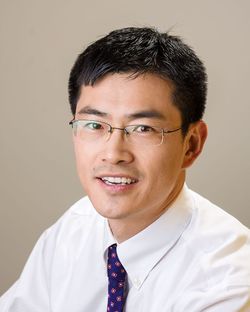
Even after twenty years of working in the dental field, I am still very active in learning. With big data and artificial intelligence, new knowledge and technologies are being developed at lightning speed. Continuing Education courses are one way to stay up to date with the newest technology available.
Some of these new technologies such as 3D cone beam X-Ray, CAD-CAM and laser in dentistry are among the most popular topics to talk about, and personally, I have attended many of them. While I was attending these lectures, I started to think about how to digest and apply different views from different speakers into my practice. Then, one day, I came across this lecture titled Evidence-Based Dentistry (EBD) by Dr. Paul Casammassimo. I felt enlightened by the science and data behind it. Now, when I practice dentistry at my office Westerville Dental Center, I will always make sure to practice according to the ADA's EBD guidelines, and only accept the best evidence as my source.
With that in mind, I decided to start my own dental study club. Come and join me, let's learn about evidence-based dentistry together.
Some of these new technologies such as 3D cone beam X-Ray, CAD-CAM and laser in dentistry are among the most popular topics to talk about, and personally, I have attended many of them. While I was attending these lectures, I started to think about how to digest and apply different views from different speakers into my practice. Then, one day, I came across this lecture titled Evidence-Based Dentistry (EBD) by Dr. Paul Casammassimo. I felt enlightened by the science and data behind it. Now, when I practice dentistry at my office Westerville Dental Center, I will always make sure to practice according to the ADA's EBD guidelines, and only accept the best evidence as my source.
With that in mind, I decided to start my own dental study club. Come and join me, let's learn about evidence-based dentistry together.
Upcoming Course
Surgically Facilitated Orthodontic Treatment |
Date: May 28 Thur 7:00 pm
Location: Zoom Cloud Meeting
Fee: $ Free
C.E. Credits: 1
OSBD Category: A
Instructor: Yun Wang, DDS, PhD
Upon completion of the course, the attendee would
Location: Zoom Cloud Meeting
Fee: $ Free
C.E. Credits: 1
OSBD Category: A
Instructor: Yun Wang, DDS, PhD
- Dr. Wang is a clinical assistant professor at the Ohio State University, College of Dentistry. She went to University of Southern California, College of Dentistry for her perio residency training. She is board certified by American Board of Periodontology. Her main focus is perio aesthetics and implant surgery.
- It has been widely believed that appropriately applied orthodontic forces do not damage the periodontium. However, orthodontic treatment in patient with thin periodontal phenotype frequently results in undesirable periodontal changes such as gingival recession. Modifying periodontal phenotype through periodontal surgeries not only reduced the risk of periodontal damage, but also accelerate orthodontic tooth movement.
Upon completion of the course, the attendee would
- Understand different surgical approaches for modifying periodontal phenotype.
- Understand the mechanism of surgically facilitated orthodontic treatment.
- Better apply interdisciplinary approach in patient care.
Site powered by Weebly. Managed by FatCow